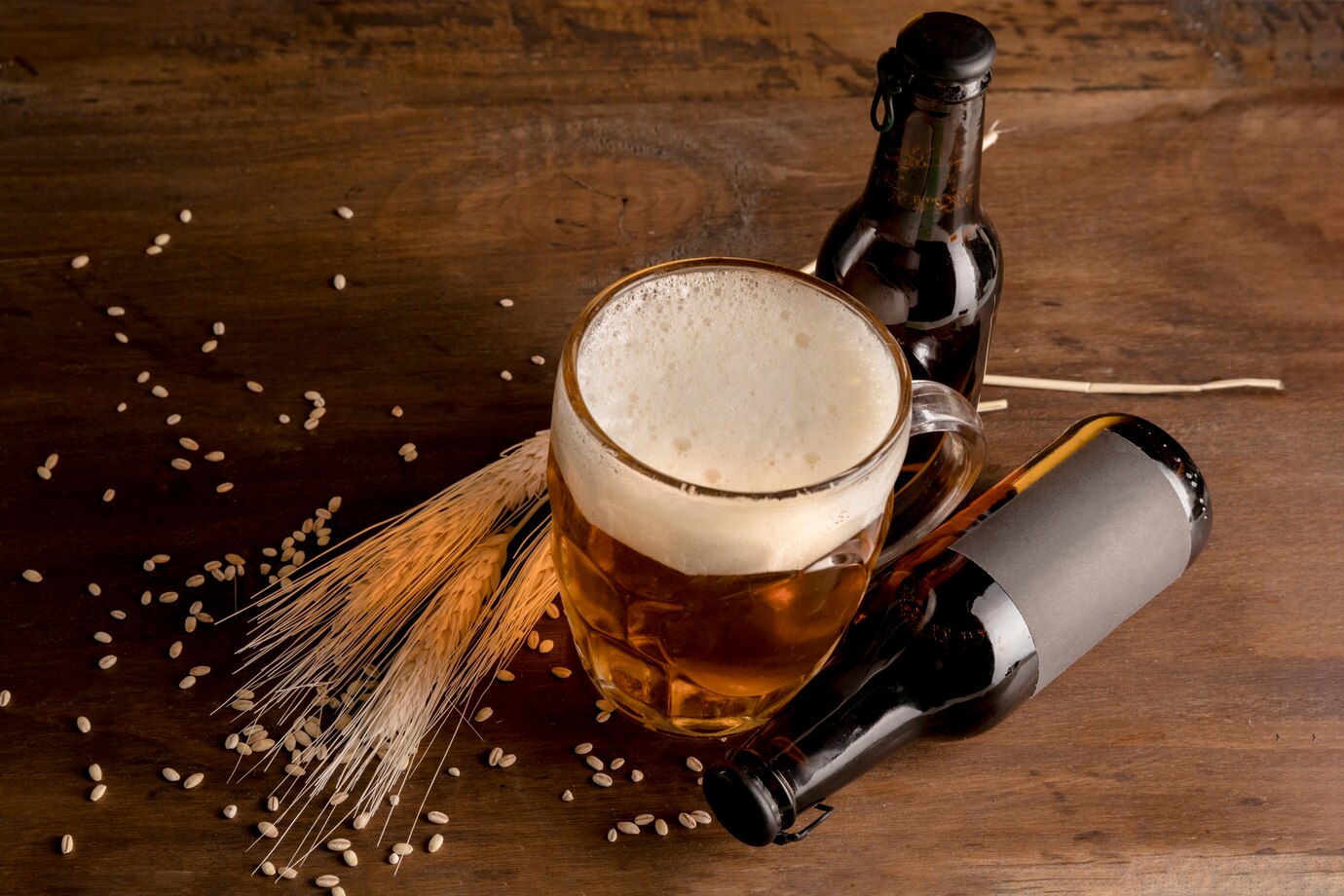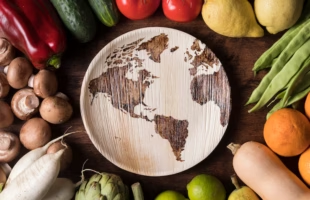
By Cath Isabedra
The rise of craft beer and traditional spirits in Asia marks a significant cultural shift driven by a desire for authenticity, quality, and unique experiences. This movement reflects a broader trend towards valuing local heritage and craftsmanship in an increasingly globalized world.
The Asia-Pacific craft beer market is expected to achieve a compound annual growth rate (CAGR) of 11.8 percent between 2022 and 2027. This market is highly varied in terms of consumption patterns and products, primarily due to the diverse preferences and social and cultural behaviors across different countries.
Over time, numerous companies throughout Asia have emerged as trailblazers and leaders in the craft beer industry, reflecting the regions where their products are brewed. Additionally, there has been a notable increase in beer consumption, particularly among the growing youth population with a preference for beer. Shifting lifestyles and consumer tastes have significantly enhanced beer adoption in the Asia-Pacific region.
Due to the escalating demand, companies in the market are expanding to meet this demand by innovating new flavors, including regional varieties.
What’s brewing in Asia?
Asia’s craft beverage industry thrives on its ability to weave local ingredients into its brews and spirits, creating flavors that are as diverse as the region itself. What sets Asia’s industry apart is its innovative blend of tradition and modernity that crafts a narrative that is both deeply personal and widely appealing. Through these aims, breweries and distilleries become custodians of their cultural heritage. Such innovation enhances the regional craft scene and paves the way for other traditional beverages to gain international recognition.
Japan: Crafting tradition with modern precision
Japan’s craft beer scene is a testament to the country’s deep appreciation for craftsmanship and quality. Breweries combine ancient brewing techniques with modern innovation to create a wide array of alcoholic beverages. It’s characterized by a blend of traditional drinks like sake and shochu and Western influences such as beer, whisky, and wine. The meticulous attention to detail and the use of local ingredients result in flavors that are distinctly Japanese.
Japan’s love affair with beer dates back to the 1870s when the Dutch established the first brewery in Yokohama. Today, beer is a cultural cornerstone enjoyed at cozy izakayas and quiet evenings at home alike. Demand for craft beer in Japan is forecast to rise, driven by the expected rise in alcohol consumption, the growing number of bars, pubs, and restaurants stocking craft beers, and an increasing number of craft beer events and festivals.
There’s a noticeable trend towards premium and craft products, especially in categories like whisky and sake. Consumers are increasingly willing to pay more for high-quality, artisanal products, and breweries are going more local, sourcing their ingredients domestically.
The country’s vibrant beer festivals, like the Japan Beer Festival, also known as Beer Fest Tokyo, highlight Japan’s deep appreciation for quality alcohol. This festival promises more than just endless glasses of delicious brews. Attendees can embark on a craft beer odyssey, exploring a variety of beer styles from established and innovative breweries. From crisp lagers to hoppy IPAs and rich stouts, the festival offers a world of flavors waiting to be explored.
Special tasting glasses designed to preserve the beer’s aromas are provided, allowing attendees to swirl, sip, and savor each sample, appreciating the beer’s complex notes and unique characteristics.
The resurgence of interest in sake, driven by events like the Tokyo Sake Festival, has played a significant role. These festivals showcase the finest sakes and educate the public about the meticulous brewing process and cultural significance of this traditional drink.
Vietnam: Brewing heritage with a modern twist
In Vietnam, the craft beer movement is gaining momentum, with breweries offering beers that blend local spices and fruits with traditional brewing techniques. However, the broader alcoholic beverages industry in Vietnam is expected to struggle in 2024, with revenues and profits likely to decline. According to a recent report, consumers in Vietnam are tightening their spending on beer and wine, preferring healthier beverage options instead. Data from 2023 indicates that major alcoholic beverage businesses have faced a challenging year, with significant declines in revenue and profit.
Despite this, small-scale domestic craft beer brands are thriving. They are using flexible business strategies and investing in cost-effective lean machinery. These brands are capitalizing on the growing consumer interest in experiential culture, offering products made from local ingredients with rich flavors and unique stories.
This movement has also spurred interest in traditional Vietnamese rice wines, known as rượu, with small distilleries modernizing their production methods while preserving age-old recipes.
South Korea: Tradition meets trend in a spirited market
South Korea presents a lucrative market with high spirits sales and a robust drinking culture. However, its spirit categories are sizable, competitive, and saturated, with complex regulations. Tapping into the market’s growth opportunities requires staying attuned to the latest trends. Brown spirits, especially scotch, dominate the imported spirits market, experiencing a rebound with a 35-45 percent year-on-year growth after COVID-19 closures.
The South Korean spirits market faces additional restrictions beyond the pandemic. The law forbids the online sale and delivery of alcoholic beverages, a regulation that remained unchanged even during the pandemic despite the industry’s struggles. This restriction aims to prevent underage drinking and protect small retailers from losing out to more prominent players. Despite these strict requirements, the market is finding workarounds, such as online ordering with in-store pickup.
The Korean FDA has also imposed stricter regulations on imports, causing complications for foreign brands. Ingredients commonly found in gin and tonic water have been banned, making market entry challenging and necessitating strategic planning and local expertise.

What South Korea can leverage at this time is the influence of celebrities. Traditional winemaking in South Korea, particularly the production of makgeolli (a traditional Korean rice wine), has experienced a resurgence in recent years, and a significant boost came after Kim Seokjin, also known as Jin, a member of the globally renowned K-pop group BTS, expressed his interest in the industry. This connection between a modern pop culture icon and a centuries-old tradition has profoundly impacted the visibility and popularity of traditional Korean alcohol locally and internationally.
Jin’s involvement (documented in a popular YouTube series, “Jin’s Traditional Alcohol Journey”) has helped bring traditional Korean alcohol into the spotlight, especially among younger generations who may have previously overlooked it in favor of more contemporary beverages like beer, soju, or Western wines. His influence has effectively bridged the gap between South Korea’s rich cultural heritage and the modern tastes of today’s youth.
The Philippines: A blend of tradition and innovation
The Philippines boasts a rich and diverse alcoholic beverage industry deeply rooted in its history and cultural traditions. The craft beer industry has seen significant growth over the past few years, with production, consumption, and consumer awareness all on the rise. According to the Craft Beer Association of the Philippines (CBAP), the most notable growth occurred in 2015, when around 15 breweries opened. Since then, the CBAP has signed up 60 craft beer breweries across the country.
The craft beer movement is driven by a growing community of enthusiasts eager to explore artisanal and locally produced beverages. This trend is further supported by a burgeoning culture of food pairings and beer festivals, which celebrate the creativity and craftsmanship of Filipino brewers. The rise of craft beer in the Philippines signifies a shift towards a more discerning and adventurous consumer base—one that values quality, flavor, and the story behind each brew.
In addition to craft beer, the Philippines has a unique tradition of tropical fruit winemaking, which began in the early 1980s. Fruits like guyabano (soursop), pineapple, kamias (ginger lily), mango, duhat (Philippine black plum), and bignay (Philippine wild berry) are commonly used to produce these distinct wines. More recently, fruits like sampalok (tamarind) and granadilla (passion fruit) have been added to the list of locally produced fruit wines. These wines, such as the award-winning Libug and Malibug berry-based red wines, showcase the Philippines’ potential as a source of unique tropical fruit wines and spirits.
Among the most prevalent traditional wines is tuba, a coconut or palm wine made from the sap of coconut and nipa palms. A notable variant, Bahalina, is distinctively reddish-brown due to the use of bark extracts from certain mangrove species. Another traditional beverage is lambanog, often referred to as Philippine Vodka, which is a potent liquor made from distilled coconut sap. Tapuy, a rice wine from the Mountain Province, and Basi, a sugarcane-based wine, further exemplify the diversity of Philippine traditional wines.
Cambodia: Innovation rooted in cultural heritage
The Cambodian craft beer and traditional alcohol industry is a fascinating blend of modern innovation and deep-rooted cultural heritage. Over the past decade, Cambodia has seen a burgeoning craft beer scene driven by local entrepreneurs and expatriates who have introduced a variety of artisanal brews to the market. These craft beers often incorporate local ingredients such as lemongrass, palm sugar, and kampot pepper, creating unique flavors that reflect the country’s rich biodiversity. The rise of craft breweries in urban centers like Phnom Penh and Siem Reap has not only diversified the alcohol market but also attracted a growing community of beer enthusiasts, both local and international, who are eager to explore these new, distinctive flavors.
On the other hand, Cambodia’s traditional alcohol, particularly sraa (rice wine), continues to play a significant role in rural areas, where it is often produced and consumed in small communities. Sraa is deeply embedded in Cambodian culture, frequently used in ceremonies and social gatherings. However, unlike the craft beer scene, traditional alcohol faces challenges such as inconsistent quality and a lack of formal recognition in the broader market. Despite this, there is a growing interest in preserving and elevating traditional Cambodian alcohol, with some producers experimenting with refining sraa production methods and marketing it to a more discerning, modern audience. This dual development in craft beer and traditional alcohol signifies Cambodia’s evolving alcohol industry, where innovation meets tradition.
Thailand: Fusing local flavors with contemporary craft
A blend of traditional and contemporary influences marks Thailand’s craft beverage scene. The resurgence of interest in traditional Thai spirits like ya dong, a herbal liquor, is complemented by the rise of craft breweries. The craft beer scene in Thailand has experienced significant growth, particularly in urban centers like Bangkok and Chiang Mai.
Despite facing regulatory challenges, including strict laws on brewing and distribution, local craft brewers have found creative ways to introduce unique, Thai-inspired beers to the market. These brews often feature indigenous ingredients like lemongrass, kaffir lime, and Thai chilies, offering consumers a taste that is distinctly Thai. The craft beer community in Thailand is passionate and resilient, with brewers often collaborating on projects and events that push the boundaries of what beer can be.
Meanwhile, Thailand’s traditional alcohol industry, particularly the production of lao khao (white rice whisky) and sato (fermented rice wine), remains integral to rural life and cultural practices. Lao khao, in particular, is deeply rooted in Thai rural culture and is often associated with local ceremonies and daily social gatherings. However, it is typically seen as a low-cost, locally produced beverage with a reputation for being strong and unrefined.
In recent years, there has been a growing movement to elevate these traditional beverages, with some producers refining their techniques and packaging to appeal to a more sophisticated market. This effort is part of a broader trend of celebrating and preserving Thailand’s rich cultural heritage while integrating it into the modern economy. The juxtaposition of the burgeoning craft beer industry and the revival of traditional alcohol highlights Thailand’s dynamic approach to balancing innovation with cultural preservation.
Singapore: A mix of modern brews and cultural classics
Singapore’s craft beer and traditional alcohol industry reflects the city-state’s dynamic blend of modernity and multicultural heritage. The craft beer scene in Singapore has flourished in recent years, with numerous microbreweries and craft beer bars emerging across the island. These establishments offer diverse brews, often infused with local ingredients such as pandan, ginger, and tropical fruits, which cater to both local tastes and the international palate.
The craft beer movement in Singapore is characterized by a strong sense of community and creativity, with breweries frequently collaborating on special editions and hosting events that celebrate the craft beer culture. This growth in the craft beer sector is also supported by a sophisticated consumer base that is increasingly interested in artisanal products and willing to explore new, unique flavors.
In contrast, Singapore’s traditional alcohol industry is relatively niche but holds cultural significance, especially within the Peranakan and Eurasian communities. Traditional beverages like toddy (a fermented palm wine) and arak (a distilled spirit made from rice or sugarcane) have long been part of Singapore’s cultural tapestry, though they are less commonly consumed today.
These traditional drinks are often associated with heritage and nostalgia, evoking memories of a bygone era. In recent years, there has been a renewed interest in these traditional beverages, with some boutique producers and restaurants incorporating them into modern culinary experiences, thereby preserving these elements of Singapore’s cultural heritage. The interplay between the burgeoning craft beer scene and the efforts to revive traditional alcohol reflects Singapore’s ability to innovate while maintaining a deep respect for its diverse cultural roots.
Rising above challenges and exploring opportunities
Despite the vibrant growth, the craft beverage industry in Southeast Asia faces its share of challenges. Regulatory hurdles and high taxes can stymie the ambitions of even the most passionate brewers and distillers.
These challenges, however, are met with resilience and innovation. Brewers and distillers are finding ways to navigate these obstacles, driven by a steadfast commitment to quality and a deep-seated passion for their craft. This resilience is a cornerstone of the industry’s growth, underscoring a dedication that is as inspiring as it is formidable. The ability to overcome such hurdles strengthens the local industry and sets a precedent for traditional beverage makers facing similar challenges, ensuring their survival and growth.
The opportunities for growth in the Southeast Asian craft beverage market are as vast as the region itself. With a burgeoning middle class and increasing disposable incomes, the demand for premium, high-quality beverages is rising. The region’s youthful demographic is particularly inclined towards experimenting with new flavors and experiences, making it a fertile ground for craft beverage expansion.
Moreover, the region’s thriving tourism industry offers a significant platform for local breweries and distilleries to showcase their craft. From bustling urban centers to serene beach towns, tourists increasingly seek out local beverages, eager to sip on the unique flavors that define their travel experiences. This influx of tourism not only boosts the local economy but also provides an opportunity for traditional beverages to be introduced to a global audience, potentially leading to an international resurgence.
Perfecting the craft
As we look to the future, the Southeast Asian craft beverage industry stands on the cusp of remarkable growth. It’s a future brimming with potential, where local ingenuity and global influences merge to create something truly special.
Let’s raise our glasses to the passionate brewers, distillers, the adventurous consumers, and the vibrant flavors that make the craft beverage industry in Southeast Asia a true beacon of innovation and joy. The journey ahead promises to be as exhilarating as the brews and spirits themselves, and I, for one, can’t wait to see – and taste – what comes next.
References
- Market Data Forecast, Asia-Pacific Craft Beer Market Report 2024-2029
- Astute Analytica, Vietnam Beer Market Size, Share | Growth Report 2032
- Vietnam Briefing, Craft Beer Brewing In Vietnam: Market Overview
- Euromonitor, Beer Trends Brewing in Southeast Asia
- F&B Report, Understanding the Rise of Craft Beer in the Age of Mass-Produced Drinks
- Grand View Research
- Statista
- Japan Beer Festival
- Research and Markets
- The Diplomat
- Market Data Forecast
- IMARC Group
This article first came out in our “Sip the Spirit of Asia” issue.








